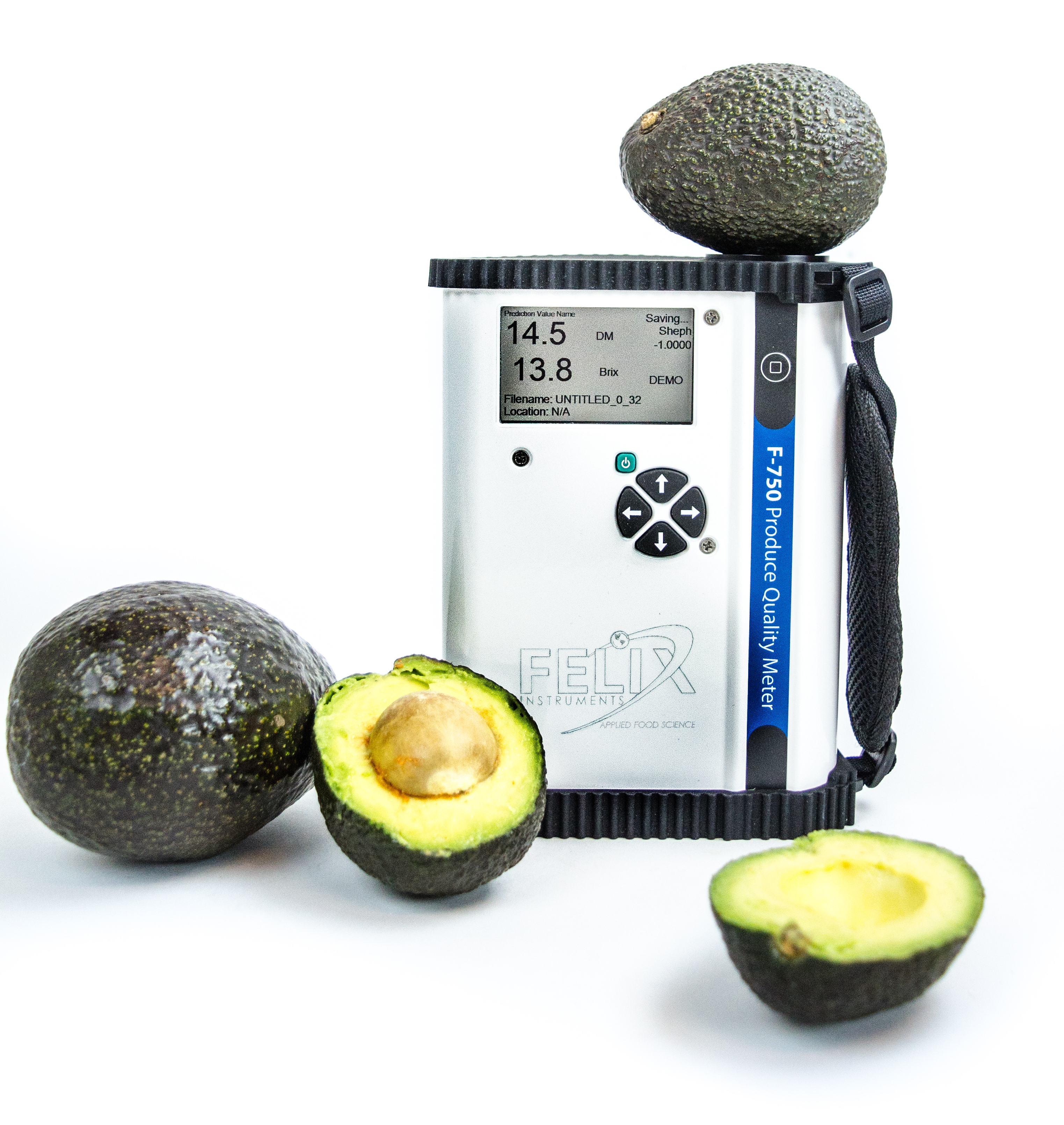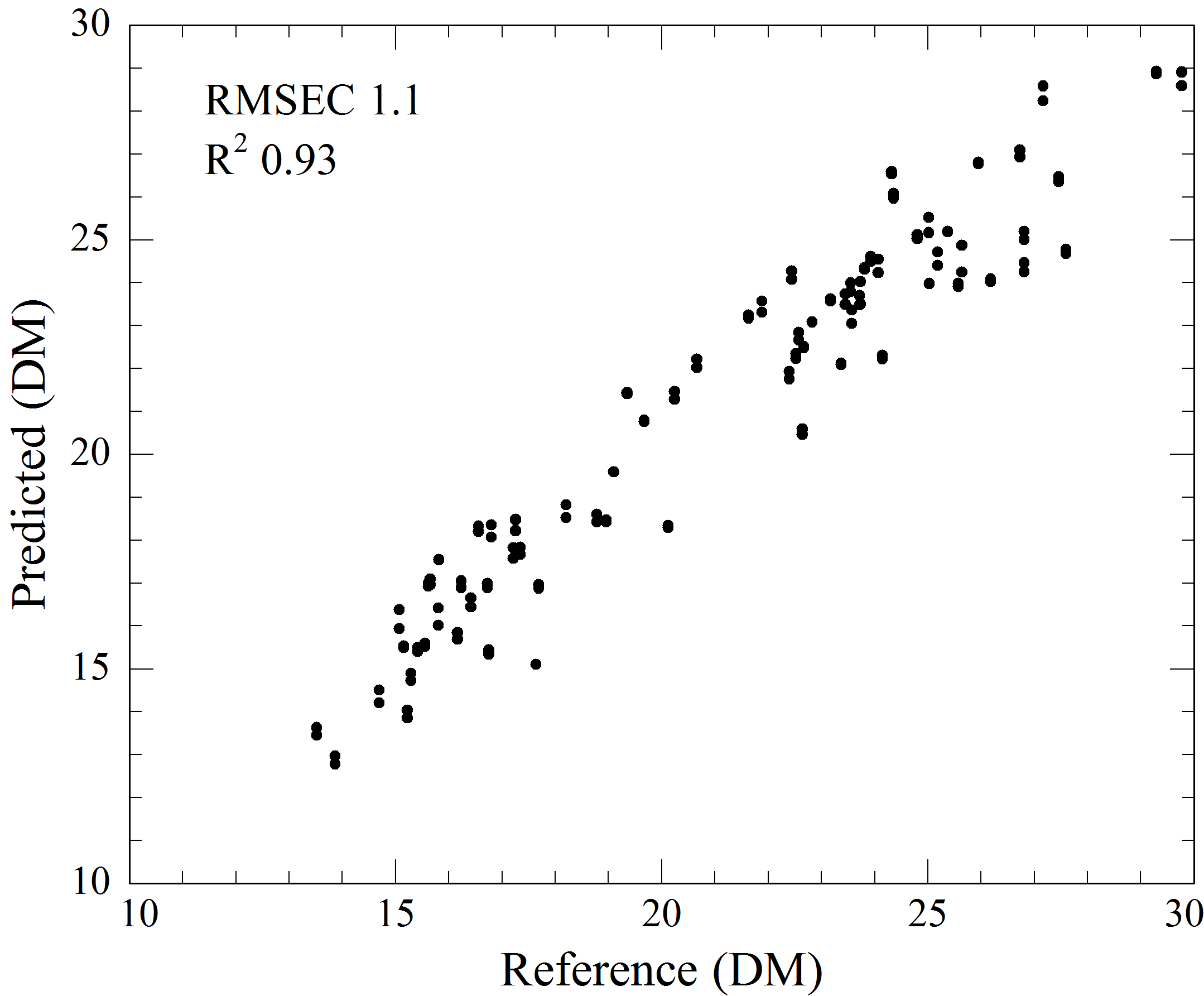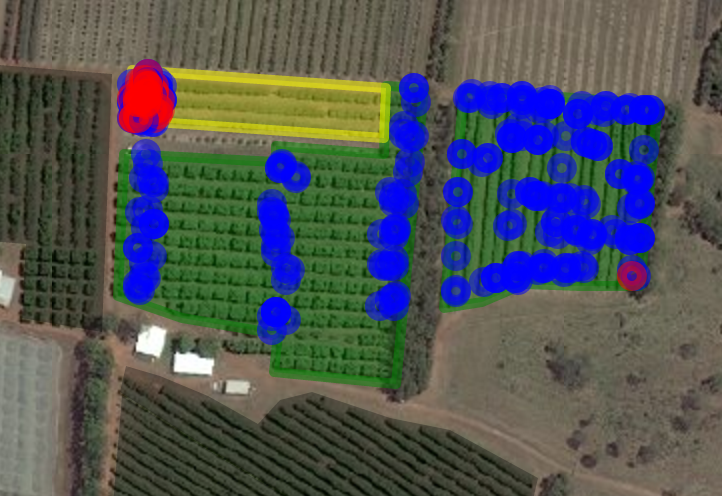March 30, 2017 at 2:03 am | Updated March 30, 2017 at 2:03 am | 3 min read
Non-destructive Measurements of Dry Matter in Avocado
Dry Matter is an important indicator of quality in Avocados, useful in estimating the harvest date and in processing center operations. The traditional method for Dry Matter measurement is both destructive and time-consuming. A study was conducted with the F-750 Produce Quality Meter for non-destructive measurements of Dry Matter in Shepard Avocado, using 71 fruit for through skin calibration. Reference values were assessed with the industry standard oven method. The F-750 was calibrated using Model Builder Software. The F-750 Produce Quality Meter estimated Dry Matter of Shepard Avocado fruit with a calculated root mean square error of calibrartion of +/-1.1DM.
Materials and Methods
Subscribe to the Felix instruments Weekly article series.
By submitting this form, you are consenting to receive marketing emails from: . You can revoke your consent to receive emails at any time by using the SafeUnsubscribe® link, found at the bottom of every email. Emails are serviced by Constant Contact
In April 2017, 71 Shepard Avocado were selected from incoming field bins. Spectra was collected through the skin, using the F-750 by placing the Avocado’s against the F-750 . The fruit were then destructively measured for Dry Matter. The spectral range 729-975 nm used by Model Builder Software to correlate the F-750 spectral signal and corresponding Dry Matter values. The resulting regression data was analyzed for linearity, root mean square error, and leave-one-out cross validation error to determine the applicability and accuracy of the created model. To account for any variation in instrument performance, two scans of each cheeks were taken at the same temperature.

Figure 1. Fruit presentation for measuring Shepard Avocados in a bin with the F-750.
Results and Discussion
A strong correlation existed between spectral data and collected reference values, with a model prediction R2 of 0.93 for Dry Matter. Figure 2 displays this correlation and demonstrates the consistency of measurement with-in the dataset.
The Root Mean Square Error of Calibration (RMSEC) for the calibration set was 1.1 % Dry Matter, illustrating the accuracy of the created model. This value represents a measure of the expected accuracy when the unit is used with future unknown samples. The RMSECV is equivalent to the expected SD of errors. .
The RMSECV is equivalent to the expected standard deviation of errors.

Figure 2. F-750 prediction value against reference method value of Dry Matter in Avocado.

GPS based mapping of field measurements. Blue marks indicate mature fruit. Red marks indicate fruit identified as immature. Yellow block indicates when a paddock is nearing harvest criteria.
Conclusions
The F-750 Produce Quality Meter can be used to estimate Dry Matter in Shepard Avocados. This may be applied in field for estimation of the progress of drying, or in process centers. In field, the geolocation and mapping app of the F-750 allow field officers to keep track of location of measurements and may be used in time repeated measurements to estimate fruit maturity in the field. In the processing center, measurement of Dry Matter can be used in assessment of ripening conditions. The F-750 online app can also be customized for quality control purposes.
Further Reading and Supporting Science:
Du, X., Kurnianta, A., McDaniel, M., Finn, C., Qian, M. (2010). Flavour profiling of ‘Marion’ and thornless blackberries by instrumental and sensory analysis. Food Chemistry, 121: 1080-1088.
Huang, L., Wu, D., Jin, H., Zhang, J., He, Y., Lou, C. (2011). Internal quality determination of fruit with bumpy surface using visible and near infrared spectroscopy and chemometrics: A case study with mulberry fruit. Biosystems Engineering, 109: 377-384.
McGlone, A., Jordan, R., Seelye, R., Clark, C. (2003). Drymatter – a better predictor of the post-storage soluble solids in apples? Postharvest biology and technology, 28: 431–435.
Kagawa, Y. Quality standards and insprection. http://iv.ucdavis. edu/files/24417.pdf Figure 2. (A) F-750 prediction value against reference method value of moisture content in sultana. (B) GPS based mapping of field measurements.
Related Products
- F-751 Grape Quality Meter
- Custom Model Building
- F-910 AccuStore
- F-751 Melon Quality Meter
- F-751 Kiwifruit Quality Meter
- F-750 Produce Quality Meter
- F-751 Avocado Quality Meter
- F-751 Mango Quality Meter
- F-900 Portable Ethylene Analyzer
- F-950 Three Gas Analyzer
- F-920 Check It! Gas Analyzer
- F-960 Ripen It! Gas Analyzer
- F-940 Store It! Gas Analyzer
Most Popular Articles
- Spectrophotometry in 2023
- The Importance of Food Quality Testing
- NIR Applications in Agriculture – Everything…
- The 5 Most Important Parameters in Produce Quality Control
- Melon Fruit: Quality, Production & Physiology
- Fruit Respiration Impact on Fruit Quality
- Guide to Fresh Fruit Quality Control
- Liquid Spectrophotometry & Food Industry Applications
- Ethylene (C2H4) – Ripening, Crops & Agriculture
- Active Packaging: What it is and why it’s important


